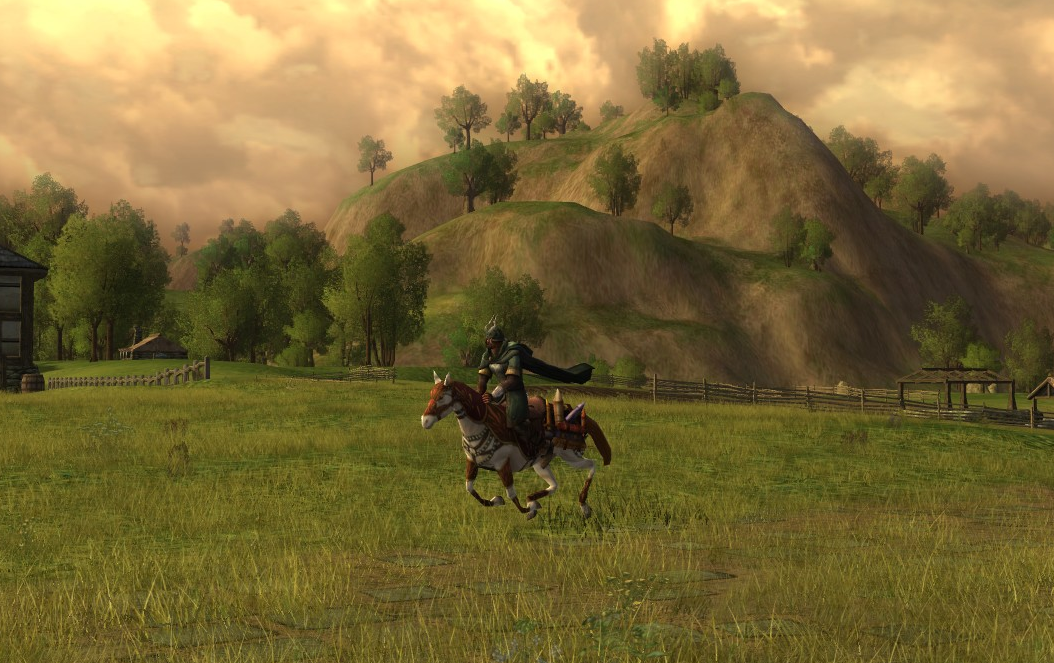Yes, the blog lives. Technically, at least. Life gets busy and complicated, but when it eases up a bit or a topic strikes my fancy… well here you are.
On the heels of the announcement of WoW’s Wrath of the Lich King Classic, a number of recent posts have taken up the topic of WoW’s dungeon finder due to be added to the Classic version of the game. Wilhelm has some thoughts here, Rohan has a good post here, and a series of interesting somewhat related posts from Bhagpuss and Shintar, got me thinking.
We’re not playing WoW at the moment, but readers of TAGN will know that our little group of ageing adventurers have returned to Valheim after setting WoW Classic aside and exploring a few other games– New World and Lost Ark specifically. Part of what propelled us back to Valheim, for me at least, was the loss of a sense of place, of “worldliness”. I’ve been down this road before.

I play these games to be removed from this crazy world to spend some time immersed in that crazy world. Experiences are what I take away from these games and exploring and adventuring in a virtual world to me should be a unique experience– even if that experience is potentially very similar to that of another player’s– the pathway, choices and timeline are my own.
The recents posts weighing in on the WoW Classic Dungeon Finder debate, damage meters and dps rotations (and or the demise of “support class” play) struck a chord. These games have evolved from being a world to explore to largely being a single “story” line to experience, largely at the exclusion of all other kinds of gameplay.
I’d add a big third item to Rohan’s two ideas about Dungeon Finder– Dungeon Finder destroyed the “world” of WoW. In the guise of solving the group formation problem, a whole host of changes ensued which led to many of the issues Shintar and Bhagpuss discuss. The advent of the DF feels like it was perhaps the first big obvious manifestation of a new and shifting philosophy of game design.
As Wilhelm discussed, DF required that instance related quests were now placed within the instance itself rather than the instance run being the culmination of a world-based narrative quest line. I always trot out the Van Cleef/Deadmines story line from WoW Classic being the epitome of the before times.

The “world” became irrelevant and needlessly time consuming. As the bar for accessing and experiencing content was reduced to logging in and clicking the LFD button, world questing and travel went out the window. With instanced content being simultaneously the easiest content to access and the repository for the best gear needed to progress to the, er, next best gear, an endless cycle of class and dungeon content revision and optimization ensued. The DF made adventures like this unnecessary.
The success of the new bite sized instance based experience depended on channeling players into set roles to feed into the DF to provide a predictable, homogeneous and optimized experience. Rotations, damage meters, gear score, “cleave” runs, etc. all grew out of this fundamental shift.
Likewise, the primacy of effectively lobby based instanced content in these and only these roles effectively killed off any other modes of game play. Crowd control? No longer needed. Stealth? Hardly. Unique “builds”? Need not apply. Specialized group buffs or other “support” activities? That went out with high buttoned greaves. Gear score too low? Pass. DPS checks? Yup. Fast travel to any and all points? Check. Don’t even get me started on “phasing”…

And all of these changes, some incremental, some more earth shaking, took us from somewhere close to the 1999 Everquest virtual world experience to something much more like Lost Ark’s fixed character archetypes, linear maps and story lines.
Don’t get me wrong, I enjoyed Lost Ark for what it was, and before that, our re-exploration of Diablo II. But what those experiences didn’t offer was an individualized character that I could relate to and take into a world to create experiences for that character. Fewer or no choices, no individuality, One True Way to gear and play.
To me, that cascade of detrimental changes fundamentally started with the DF whose original mission was to solve a quality of life problem– how to facilitate group formation for instanced content. Very soon after that, the tail began wagging the dog and my how much wagging there has been.
If the difficulty of forming dungeon groups was the problem, the DF wasn’t the only solution. WoW certainly could have taken other tacks tried in other games. Scaling dungeon difficulty to group size or other indicia of “power” (i.e., gear score, level, etc.) could have been one way. LOTRO essentially went this route.
Mercenaries could have been another. Need two more to fill out your party? Hire a merc. Everquest and other games have taken that approach. Either of those alternatives wouldn’t have done any true “violence” to the core idea of an explorable world in which instanced content serves a role to move story forward and provide for progression.
When I look back at the games I’ve spent the most time in over the years (or had the most affinity for), the ones that I have stuck with for the longest– WoW, LOTRO, Everquest, Minecraft, and to a lesser extent, Valheim all have (or had at the time I was playing them) a true sense of place, of worldliness.

I have memories of those places and experiences as if I had visited them and spent time there. These are entirely unlike the memories I have of reading a novel or watching a film. For that matter, even the experiences of separate characters in those worlds have their own unique recollections.
Are there any virtual worlds left to explore and experience any more? For the time being, I’m entirely content with the sense of place and worldliness I’m finding again in Valheim.

